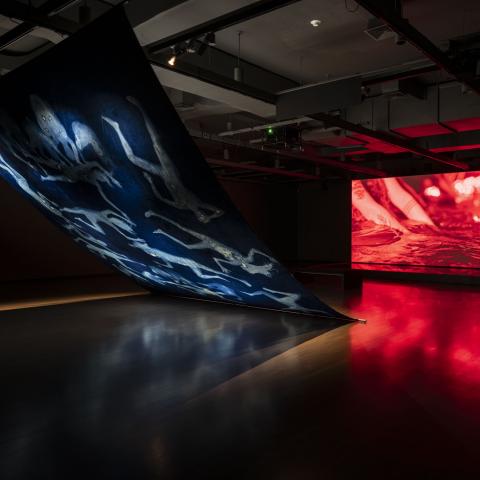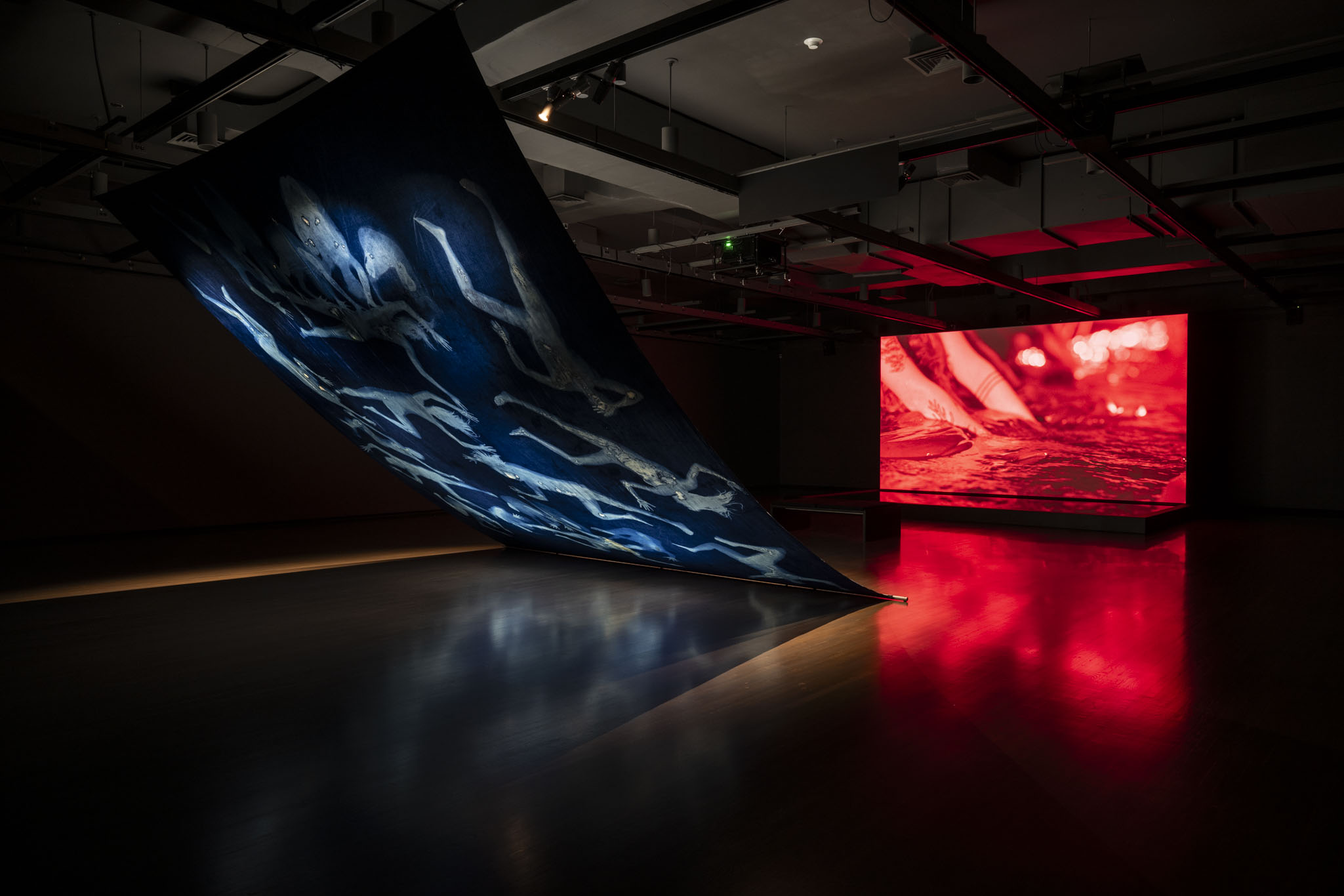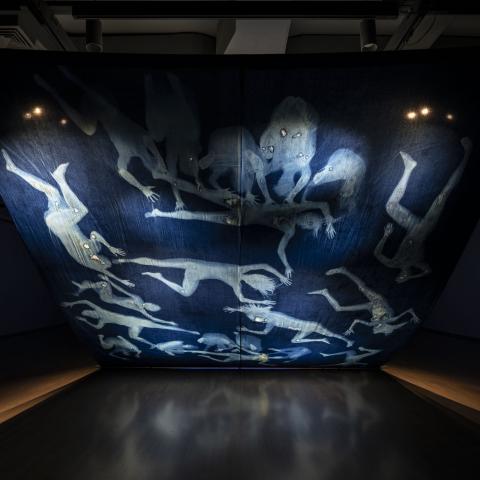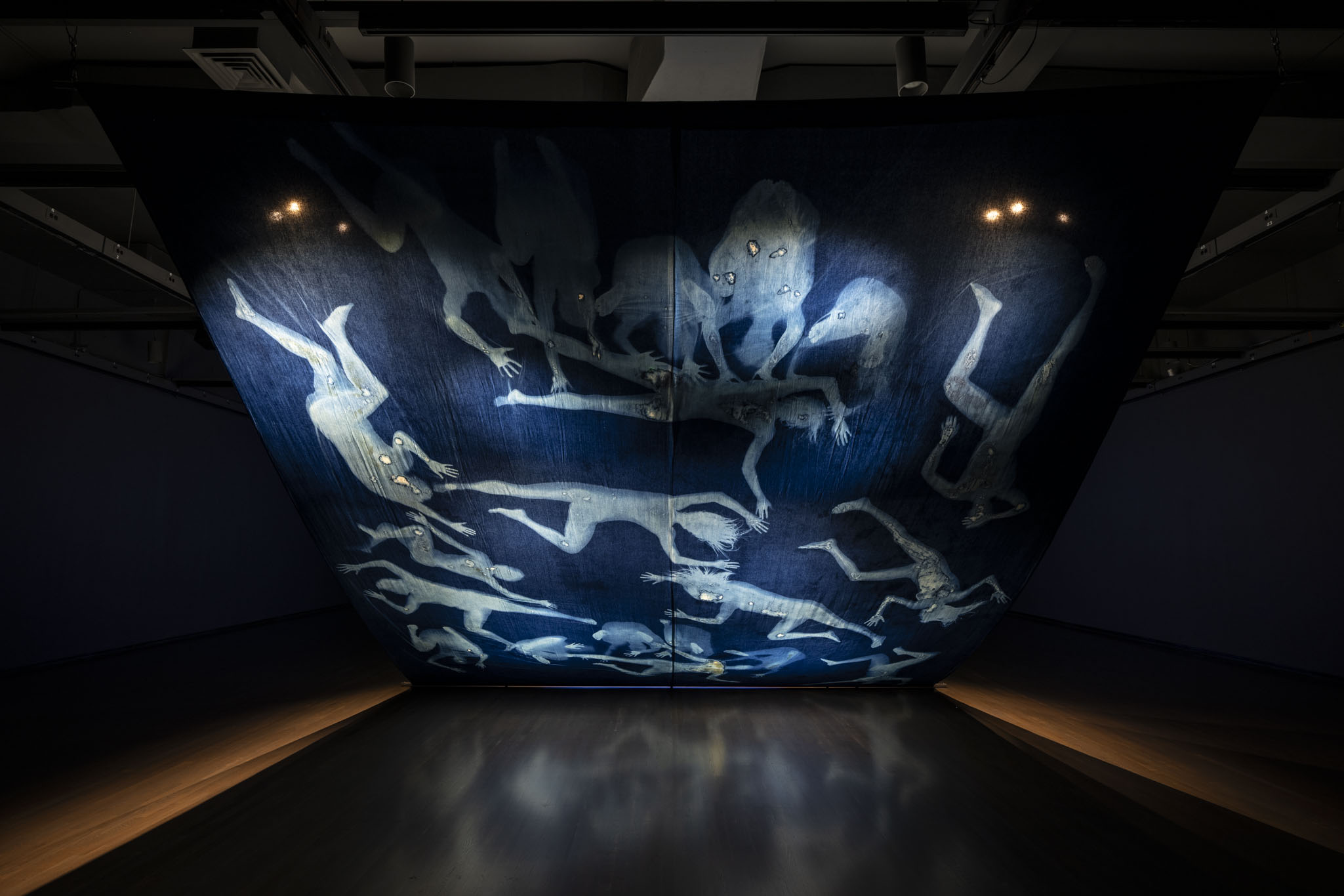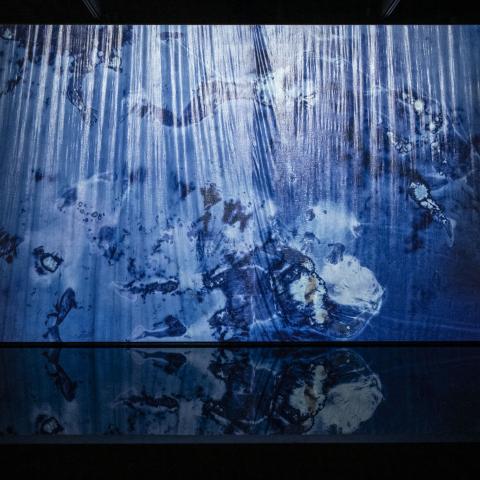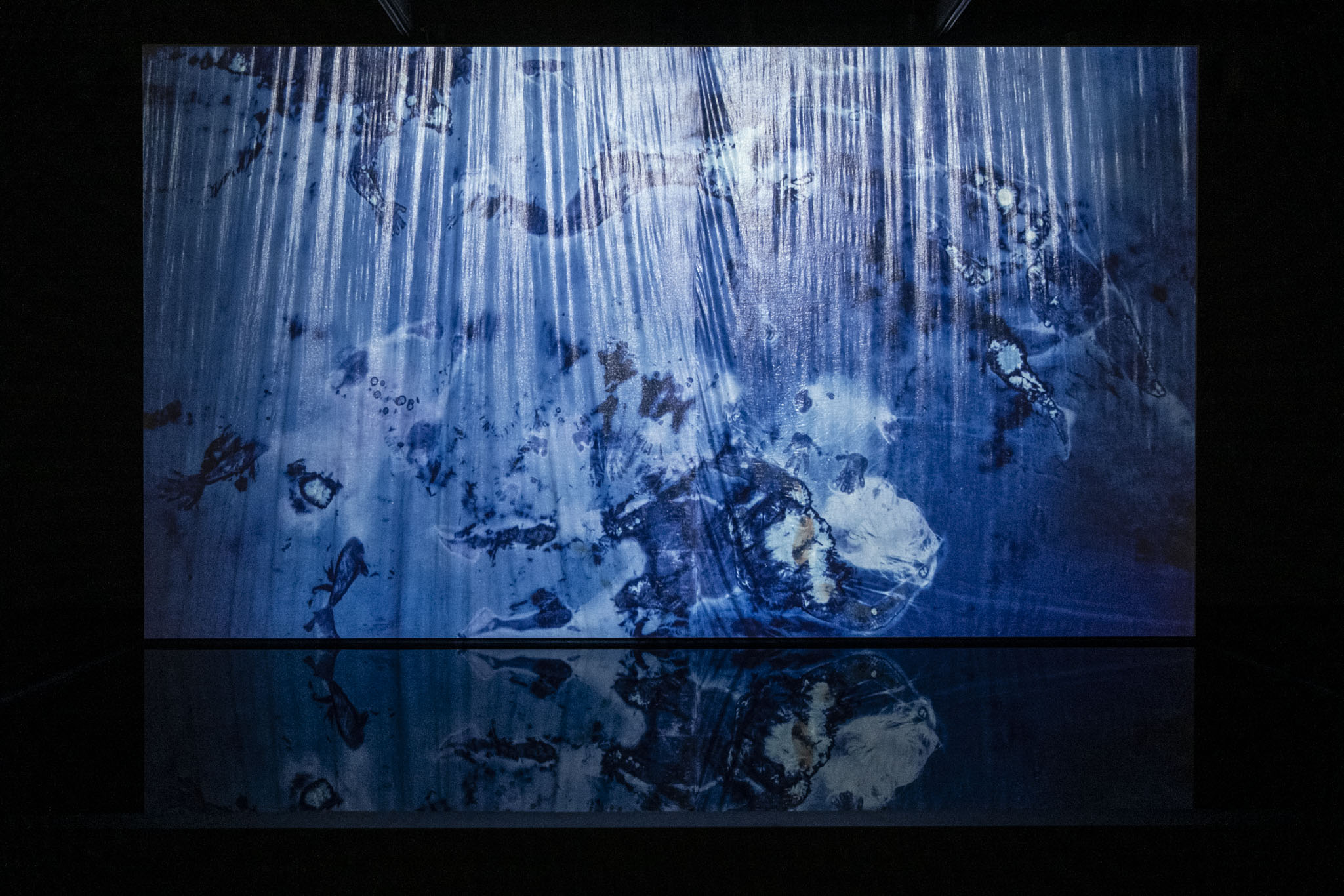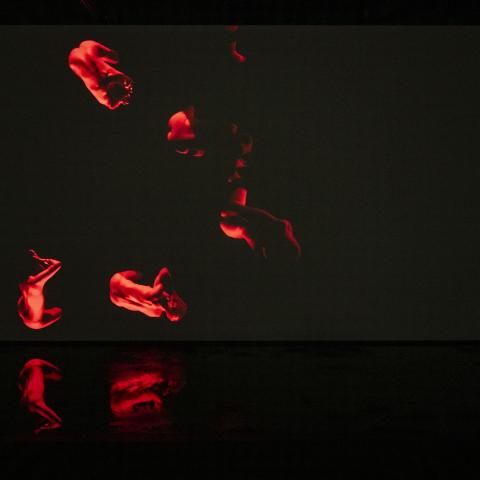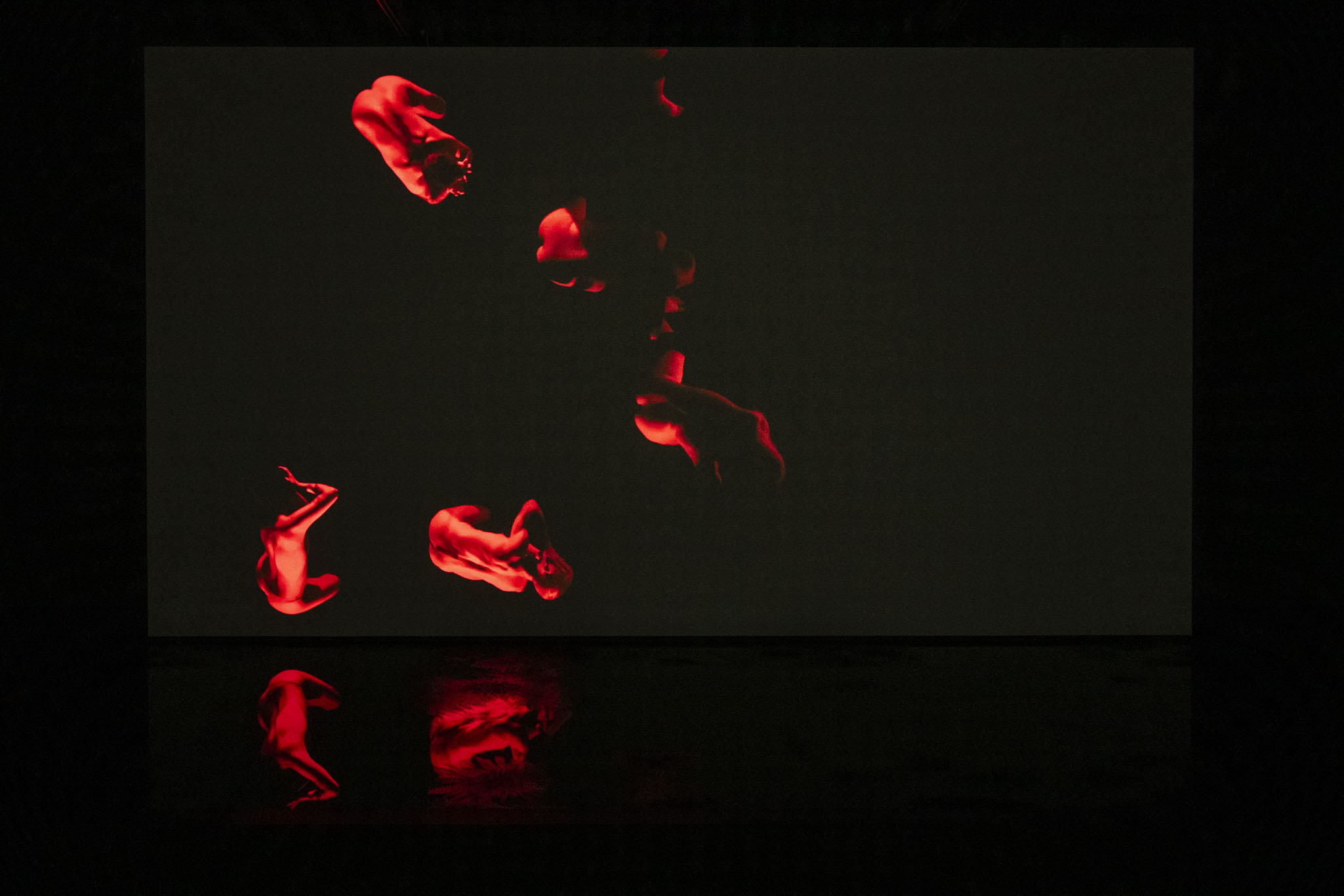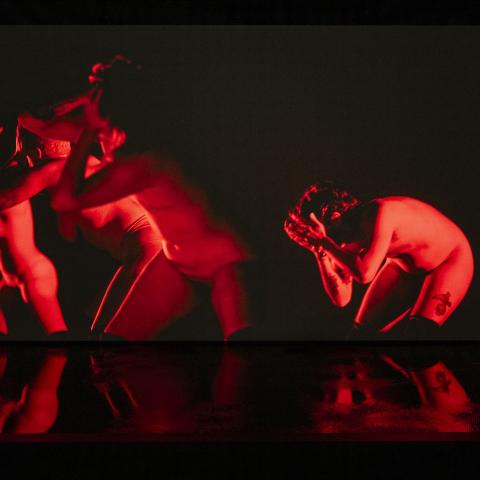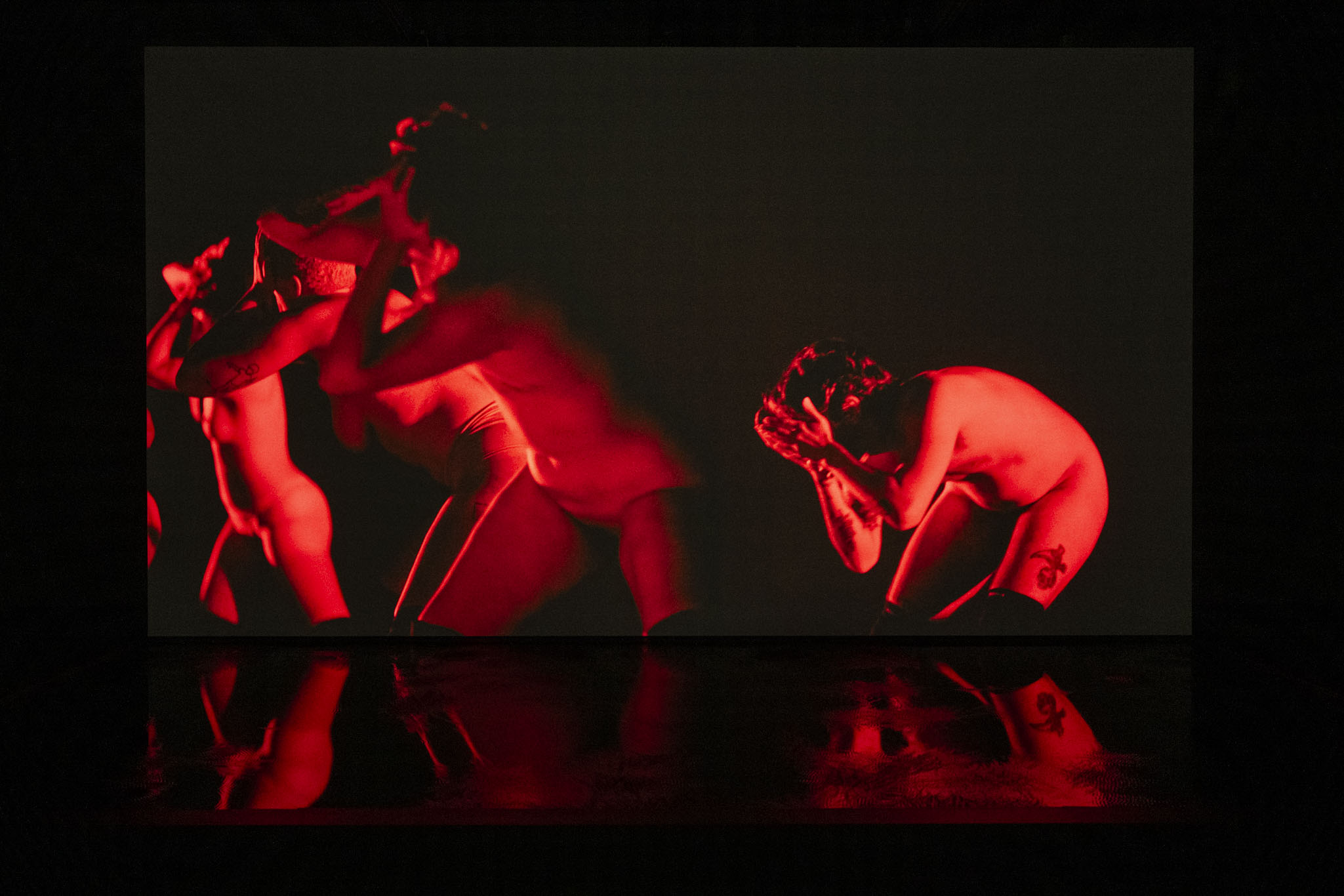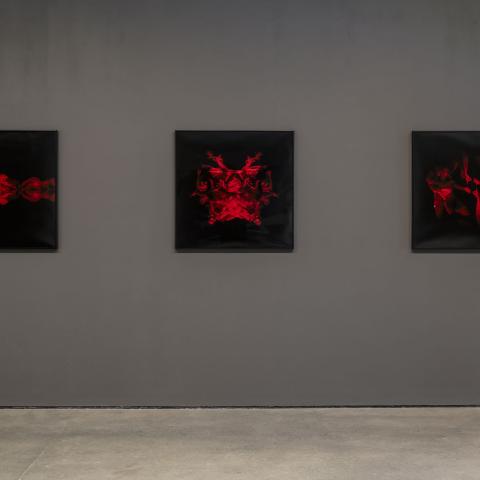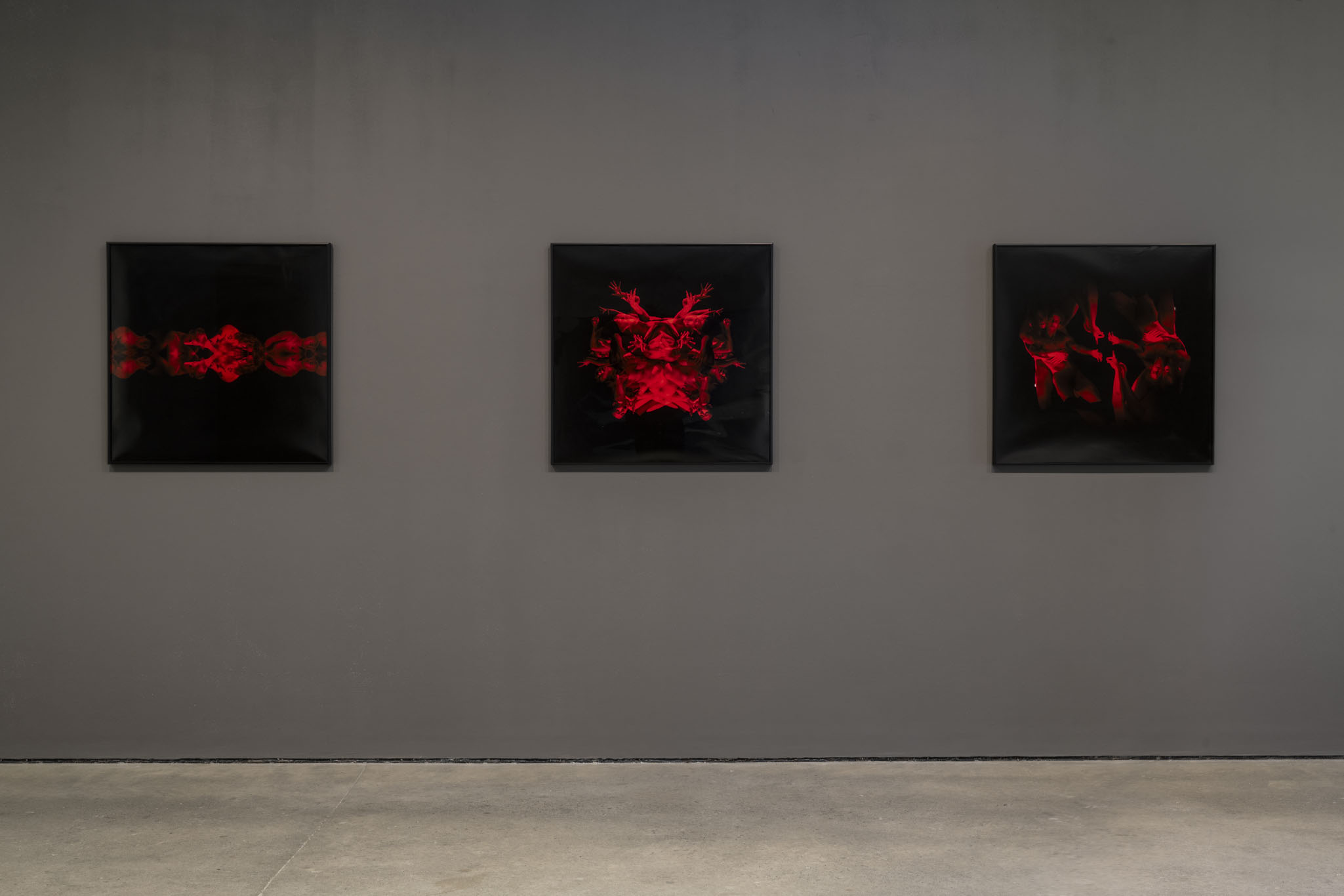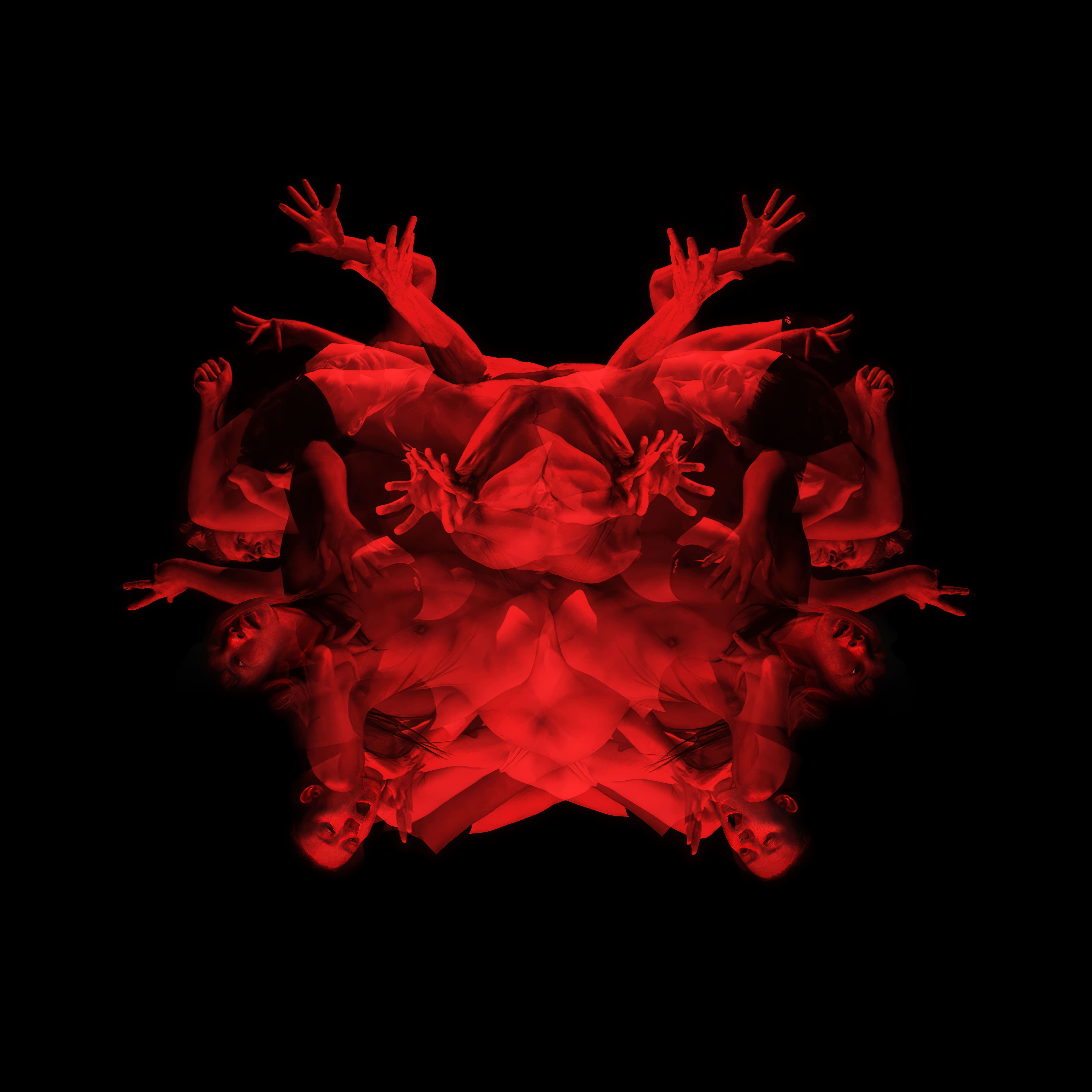
Cassils, Human Measure Rorschach, #1, 2024. Digital image. Photo: Manuel Vason. Design: Catherine Davies Bell. Courtesy of the artist.
Cassils: Movement
Curated by Jacqueline Bell and Carol A. Stakenas
February 16 - June 9, 2024
Artist Talk: Cassils
Thursday, February 15
Opening Reception
Thursday, February 15
Indigenous Haute Couture Open Studios and Extended Hours at Walter Phillips Gallery
Thursday, March 21
Beers for Queers at Walter Phillips Gallery
Friday, May 10
Spring Banff Artist in Residence 2024 Open Studios and Exhibition Tour, Cassils: Movement
Wednesday, June 5
Movement exists in the interstices of performance, photography, sound and light. The title references the sequential stages of a musical score, as well as social, political, physiological and somatic movements. This exhibition includes a series of new works that translate Human Measure (2021-ongoing), Cassils’ first contemporary dance, into a visceral, immersive, visual and sonic installation. Consisting of the series of photographs, Human Measure Rorschach (2024); film installation, Movement (2024); and large-scale cyanotype, Human Measure (Developed) No. 2 (2021); the exhibition both documents the live performance while transforming it into distinct, interconnected artworks.
The film installation captures the live dance performance Human Measure created with choreographer Jasmine Albuquerque, set in a theatre that Cassils transforms into an analogue photography darkroom, lit by red safety lights. The dancers’ gestures undulate between moments of tenderness to scenes of brutality, interpreting themes of self-actualization and empowerment against an antagonistic political backdrop where trans* people face severe discrimination, stigma and systemic inequality. Albuquerque’s choreography is also inspired by dancers' participation in self-defense workshops, reconfiguring threats of violence into poetic compositions reflecting the group’s agency.
Projected above a pool of water, a mirroring effect doubles the film alluding to a Rorschach Test. This psychological exam prompts interpretations of abstract, symmetrical ink blots revealing the viewer’s unconscious thoughts, motives, and desires; referenced in this context to indicate projections onto trans* subjecthood. This formal approach is echoed in the series of photographic works, Human Measure Rorschach, which consists of performance documentation that has been folded in on itself creating abstractions of entangled limbs.
Cassils' ongoing critical engagement with the work of twentieth-century artist Yves Klein is a central reference for the exhibition. A sonic reinterpretation of Klein's 1949 Monotone Symphony composed by Cassils’ longtime collaborator Kadet Kuhne is integral to the film installation. The composition is sung by seventeen trans* vocalists, each singing a single, sustained note of a D major chord spanning seventeen octaves. Audible throughout the gallery space, the music is translated into mechanical vibrations by devices in the sub-floor of the reflecting pool. The smooth surface of the water is literally ruptured by the sound of trans* voices.
Cassils’ large scale cyanotype, Human Measure (Developed) No. 2, references Klein’s well-known series of paintings, Anthropométries, in which he instructed women to dip their bodies in blue paint and press themselves onto a substrate; a process the artist likened to the use of 'living brushes.' Each body print in the cyanotype is an indexical record from the movements present in the choreography and suggestive of outlines found in ACT UP and Black Lives Matter protests. The forms gesture towards traces of lives lived, while reflecting gentle sensuality, care, and a sense of floating or resting. Produced using an analogue photographic process using UV light and developed live on stage during the performance, the work reverberates the blue hue used extensively by Klein while alchemizing his instrumentalization of female agency into an image of queer collectivity and self-determination. Leaning into abstraction, this piece can simultaneously be read as a protest banner, artwork and performance document.
Movement furthers Cassils’ engagement with questions of trans* visibility: exploring abstraction as a tactic of refusal from the enforced spectacularity of trans* bodies in a moment of heightened violence.
Please note that the exhibition contains nudity and depictions of flashing lights which may not be suitable for people with photosensitive epilepsy or other light sensitivities.
The exhibition at Walter Phillips Gallery is made possible through the generous support of the Canada Council for the Arts, Alberta Foundation for the Arts, Government of Canada and Government of Alberta. The film installation, Movement was produced with support from the Canada Council for the Arts, in collaboration with Banff Centre and with additional support from a Paul D. Fleck Fellowship.
The film installation utilizes footage from the live performance of Human Measure, 2022 at Roy and Edna Disney CalArts Theater (REDCAT). Human Measure was first commissioned on the occasion of the solo exhibition, Cassils: Human Measure, 2021, HOME Manchester, curated by Bren O'Callaghan, funded by Arts Council England and Manchester City Council; and workshopped at Banff Centre with support from a Paul D. Fleck Fellowship. Human Measure was further supported by the National Arts Centre’s National Creation Fund. With additional thanks to the Villa Bellagio Residency through the Rockefeller Foundation, INMATT Foundation, Canadian Stage and REDCAT for their continued support.
Credits for film installation, Movement: Choreographer: Jasmine Albuquerque. Dancers: Kaydence De Mere, Canyon Carballosa, Cassils, jas lin, Alucard Mendoza McHaney, Marval Rex and B Gosse. Composer: Kadet Kuhne. Vocalists: Sasha Wilde, Ben Barwick, Valeria Radchenko, Lou Sheppard, Tobaron Waxman, Caleb Craig, Parker Heyford, Aron Dahl, Lucas Bouk, Vanessa Wheeler, C Han, Leslie Allison, Torii Wolf, Socks Whitmore, Emma Tome, Oliver Lyric, Sof Kreidstein and Noah D. Director: PJ Raval. Producer: Farihah Zaman. Producer: Rebecca Rufer. DP: Amina Zadeh. AC: Emma Feinberg. AC: Sam Greenspan. Steady Camera Operator A: Wes Turner. Steady Camera Operator B: Victor Grossling. Infrared and Overhead Camera Operator: Graham Kolbins. PA: Emma Feinberg. PA: John Armstrong. Editor: Arshia Fatima Haq. Lead Preparator: Mimmo Maiolo. Gallery Assistant: Megan Feniak. Audio Mastering: Ben Ewing. Colourist: Jozef Karoly. VFX Editor: Court Brinsmead. Performers for creation of Human Measure (Developed) No. 2: Rocket de la Luna, Mud Howard, Nano Arenado, Aidan Dick, erika niko barrios, Marsian De Lellis, Sassy, Alec Stoddard, Lex Ryan, Carmina Escobar, Sakara Fjørn, Christina Lujan, Julietta Magaña Pérez, Vaughan Larsen, Kay J Jenkins, Sydney Rogers (Miss Barbie Q), Lio Mehiel, Elliot Musgrave and Caleb Craig. Crew for Live Performance of Human Measure at REDCAT, Los Angeles: Lead Artist: Cassils. Co-producer / Stage Manager: Gina Young. Co-producer: Diana Wyenn. Choreographer: Jasmine Albuquerque. Lighting Designer: Christopher Kuhl. Composer: Kadet Kuhne. Cyanotype Technical Director: Bonny Taylor. Flash Wall Advisor: Casey Cunneen. Additional credits: Community Partnership Toronto: Uplift Kitchen. Somatic Instructor (Toronto): Kai Cheng Thom. Internal Martial Artist (Los Angeles): Yunuen Ri. Design: Catherine Davies Bell.


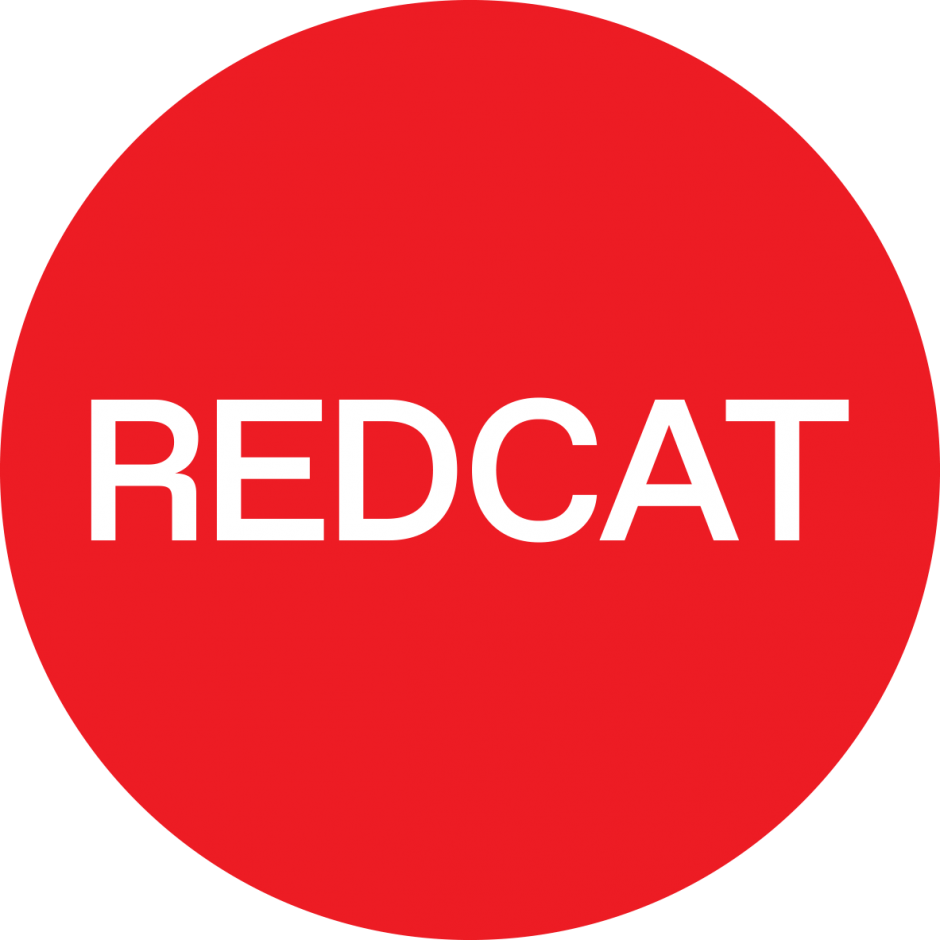
Cassils
Cassils is a transgender artist who makes their own body the material and protagonist of their performances. Cassils' art contemplates the history(s) of LGBTQI+ violence, representation, struggle, survival, empowerment and systems of care. For Cassils, performance is a form of social sculpture: drawing from the idea that bodies are formed in relation to forces of power and social expectations, Cassils' work excavates historical contexts to examine the present moment.
Cassils has an upcoming solo exhibition at SITE Santa Fe and has had recent solo exhibitions at HOME Manchester; Station Museum of Contemporary Art, Houston; Perth Institute for Contemporary Art; Ronald Feldman Fine Arts, New York; Philadelphia Academy of Fine Arts; School of the Museum of Fine Arts, Boston; Bemis Center, Omaha; and MU Eindhoven.
They are the recipient of funding from the Ford Foundation (2023), the National Creation Fund (2022), a 2020 Paul D. Fleck Residency at Banff Center for Arts and Creativity, a Princeton Lewis Artist Fellowship finalist (2020), a Villa Bellagio Rockefeller Foundation Fellowship (2019), a United States Artist Fellowship (2018), a Guggenheim Fellowship and a COLA Grant (2017) and a Creative Capital Award (2015). They have received the inaugural ANTI Festival International Prize for Live Art, California Community Foundation Grant, MOTHA (Museum of Transgender Hirstory) award, and numerous Visual Artist Fellowships from the Canada Council of the Arts. Their work has been featured in New York Times, Boston Globe, Artforum, Hyperallergic, Wired, The Guardian, TDR, Performance Research, Art Journal and was the subject of the monograph Cassils published by MU Eindhoven and the catalog Solutions, published by the Station Museum of Contemporary Art, Houston (2020). Cassils' work was recently acquired by the Victoria Albert Museum, London; Art Gallery of Ontario, Toronto and the Leslie Lohman Museum, New York.
Cassils is an Associate Professor in Visual Studies at the University of Toronto.
Jacqueline Bell
Jacqueline Bell is curator at Walter Phillips Gallery. Recent exhibitions include The Shape of an Echo: Selections from the Permanent Collection (2022); darkness is as deep as the darkness is by Rita McKeough (2020); A materialist history of contagion by Candice Lin (2019); Guidelines by Carmen Papalia with Heather Kai Smith (2019); If the river ran upwards (2018) with Silvina Babich, Alana Bartol, Diane Borsato, Carolina Caycedo, T’uy’t’tanat-Cease Wyss and Anne Riley, and Genevieve Robertson; THE CAVE (2018) by Young Joon Kwak with Marvin Astorga, Shawna Dempsey and Lorri Millan, Adrian Stimson, and Kim Ye; and the exhibition and performance, Everything I Say Is True (2017) by Kite. Prior to joining Walter Phillips Gallery, Bell contributed to a number of projects and exhibitions at LACE (Los Angeles Contemporary Exhibitions). As an independent writer, Bell has been published by C Magazine, FIELD: A Journal of Socially-Engaged Art Criticism, and X-TRA: Contemporary Art Quarterly, among others. She is a graduate of the MA Art and Curatorial Practices in the Public Sphere program at the University of Southern California.
Carol A. Stakenas
Carol A. Stakenas is a curator and educator and currently serves as the director and chief curator of Providence College Galleries in Rhode Island. She advocates for creative practitioners whose projects transcend the confines of narrowly defined fields to create opportunities for people to come together and respond to timely issues through art. She has commissioned and produced multidisciplinary public art at sites including the Brooklyn Bridge Anchorage, Times Square, and Kings County Hospital in Flatbush, Brooklyn, as well as Hollywood Boulevard’s Walk of Fame, the Los Angeles Police Department, and the top of Los Angeles’ City Hall. These site-responsive exhibitions, socially engaged projects, and transdisciplinary initiatives have engaged publics from all walks of life in New York City, Los Angeles, Boston, and beyond.
Stakenas has worked closely with a wide-ranging group of artists and collectives: Antenna Design, Natalie Bookchin, Cassils, Mel Chin, Fallen Fruit, Piero Golia, Jeanne van Heeswijk, Ulysses Jenkins, Suzanne Lacy, Marjetica Potrč, Nathalie Pozzi + Eric Zimmerman, Raqs Media Collective, Ultra-red, Denise Uyehara with James Luna, and Marina Zurkow as well as scholars such as Marie de Brugerolle, Jennifer Doyle, Amelia Jones, Peggy Phelan, Michael Ned Holte, and Clay Shirky.
Most recently, Stakenas served as artistic director/curator for Rosine Association 2.0 for Swarthmore College. Inspired by the papers of Mira Sharpless Townsend, 19th-century activist, Rosine 2.0 was a multicentric art and archive-based project that brought together social practice artists, harm reduction leaders, and archivists in collaboration with women, trans*, and non-binary people living and working in vulnerable communities in Philadelphia.
Previously, Stakenas was executive director of No Longer Empty (New York). She also served as executive director of Los Angeles Contemporary Exhibitions (LACE) and as deputy director/curator of Creative Time (New York). Stakenas has taught at Bennington College, Otis College of Art and Design, Parsons School of Design/The New School, Roski School/University of Southern California, and the School of the Museum of Fine Arts/Tufts University.
